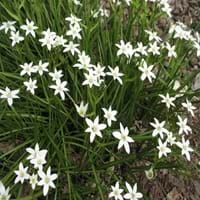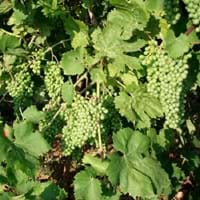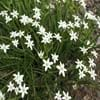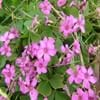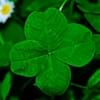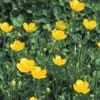Life Span
Perennial
Perennial
Type
Bulb or Corm or Tuber
Fruit
Origin
Eastern Europe, Southern Europe, Turkey
Hybrid origin
Types
Not Available
Not Available
Habitat
Cultivated Beds, meadows
Cold Regions
USDA Hardiness Zone
5-8
5-9
Sunset Zone
21,22
1a, 1b, 2a, 2b, 3a, 3b, 4, 5, 6, 7, 8, 9, 10, 11, 14, 15, 16, 17, 18, 19, 20, 21, 22, 24
Habit
Clump-Forming
Vining/Climbing
Flower Color
White, Light Green, Silver
Not Available
Flower Color Modifier
Bicolor
Bicolor
Fruit Color
Not Available
White, Light Green
Leaf Color in Spring
Green
Green, Light Green
Leaf Color in Summer
Light Green
Green, Gray Green
Leaf Color in Fall
Several shades of Green
Yellow, Red, Gray Green, Bronze
Leaf Color in Winter
Light Green
Light Green
Leaf Shape
Oblong-lanceolate
Cordate
Plant Season
Spring
Summer, Fall
Sunlight
Full Sun, Partial Sun, Partial shade
Full Sun, Partial Sun
Type of Soil
Clay, Loam, Sand
Clay, Loam
The pH of Soil
Acidic, Neutral, Alkaline
Neutral, Alkaline
Soil Drainage
Well drained
Average
Bloom Time
Early Spring, Spring
Late Spring, Early Summer
Tolerances
Drought
Drought
Where to Plant?
Container, Ground, Pot
Ground
How to Plant?
Seedlings
Runners
Plant Maintenance
Medium
Medium
Watering Requirements
Average Water Needs
Average Water Needs
In Summer
Lots of watering
Lots of watering
In Spring
Moderate
Moderate
In Winter
Average Water
Average Water
Soil pH
Acidic, Neutral, Alkaline
Neutral, Alkaline
Soil Type
Clay, Loam, Sand
Clay, Loam
Soil Drainage Capacity
Well drained
Average
Sun Exposure
Full Sun, Partial Sun, Partial shade
Full Sun, Partial Sun
Pruning
No pruning needed
Remove damaged leaves, Remove dead branches, Remove dead leaves
Fertilizers
Water soluble fertilizers
All-Purpose Liquid Fertilizer
Pests and Diseases
No serious insect or disease problems
Grasshoppers
Plant Tolerance
Drought
Drought
Flowers
Showy
Insignificant
Flower Petal Number
Single
Not Available
Foliage Texture
Medium
Coarse
Foliage Sheen
Glossy
Matte
Allergy
Dermatitis, Poisonous to grazing animals
conjunctivitis, Gastric disturbances, Sweating
Aesthetic Uses
Beautification, Showy Purposes
Showy Purposes
Beauty Benefits
Not Available
Not Available
Environmental Uses
Air purification
Air purification
Medicinal Uses
Certain forms of cancer, Homeopathy
anti inflammatory, Sunburns, Vitamin C
Part of Plant Used
Root
Fruits
Other Uses
Used As Food
Sometimes used for making wine, Used As Food
Used As Indoor Plant
Yes
No
Used As Outdoor Plant
Yes
Yes
Garden Design
Alpine, Container, Mixed Border, Rock Garden / Wall
Edible, Fruit / Fruit Tree, Vine
Botanical Name
ORNITHOGALUM balansae
VITIS 'Cayuga White'
Common Name
Star-of-Bethlehem
White Grape
In Hindi
Star-of-Bethlehem
White Grape
In German
Stern -of- Bethlehem
Weiße Traube
In French
Star- de - Bethléem
Raisin blanc
In Spanish
Estrella de Belen
uva blanca
In Greek
Star- of- Βηθλεέμ
λευκό Σταφύλι
In Portuguese
Star of -Bethlehem
uva Branca
In Polish
Star- of- Betlejem
Biały winogron
In Latin
Star of Bethlehem ,
uva alba:
Phylum
Magnoliophyta
Magnoliophyta
Class
Lilopsida
Magnoliopsida
Family
Asparagaceae
Vitaceae
Clade
Angiosperms, Monocots
Angiosperms, Eudicots, Rosids
Tribe
Ornithogaleae
Not Available
Subfamily
Ornithogaloideae
Not Available
Properties of Star-of-Bethlehem and White Grape
Wondering what are the properties of Star-of-Bethlehem and White Grape? We provide you with everything About Star-of-Bethlehem and White Grape. Star-of-Bethlehem doesn't have thorns and White Grape doesn't have thorns. Also Star-of-Bethlehem does not have fragrant flowers. Star-of-Bethlehem has allergic reactions like Dermatitis and Poisonous to grazing animals and White Grape has allergic reactions like Dermatitis and Poisonous to grazing animals. Compare all the properties and characteristics of these two plants. Find out which of these plant can be used as indoor plant. If you are interested to decorate your house and garden, find out aesthetic uses, compare them and select the plant which will beautify your surrounding. Along with beautification, try comparing medicinal and edible uses of Star-of-Bethlehem and White Grape and you can choose the plant having best and most benefits.
Season and Care of Star-of-Bethlehem and White Grape
Season and care of Star-of-Bethlehem and White Grape is important to know. While considering everything about Star-of-Bethlehem and White Grape Care, growing season is an essential factor. Star-of-Bethlehem season is Spring and White Grape season is Spring. The type of soil for Star-of-Bethlehem is Clay, Loam, Sand and for White Grape is Clay, Loam while the PH of soil for Star-of-Bethlehem is Acidic, Neutral, Alkaline and for White Grape is Neutral, Alkaline.
Star-of-Bethlehem and White Grape Physical Information
Star-of-Bethlehem and White Grape physical information is very important for comparison. Star-of-Bethlehem height is 10.20 cm and width 12.70 cm whereas White Grape height is 370.00 cm and width 460.00 cm. The color specification of Star-of-Bethlehem and White Grape are as follows:
Star-of-Bethlehem flower color: White, Light Green and Silver
Star-of-Bethlehem leaf color: Green
White Grape flower color: Not Available
- White Grape leaf color: Green and Light Green
Care of Star-of-Bethlehem and White Grape
Care of Star-of-Bethlehem and White Grape include pruning, fertilizers, watering etc. Star-of-Bethlehem pruning is done No pruning needed and White Grape pruning is done Remove damaged leaves, Remove dead branches and Remove dead leaves. In summer Star-of-Bethlehem needs Lots of watering and in winter, it needs Average Water. Whereas, in summer White Grape needs Lots of watering and in winter, it needs Average Water.
